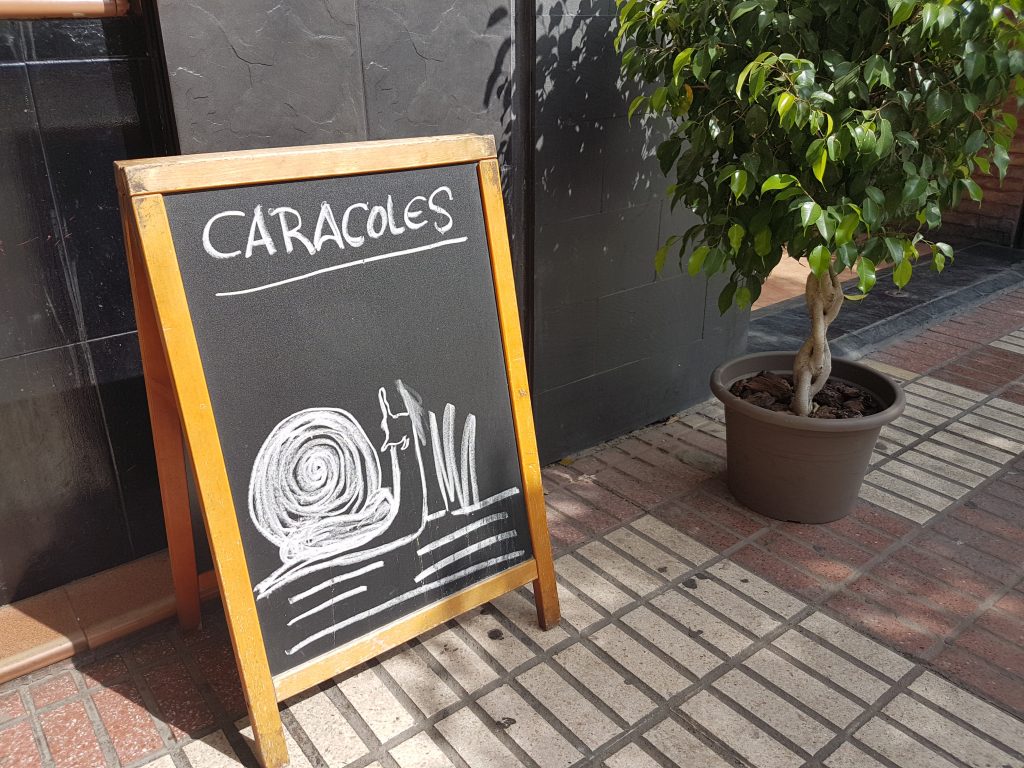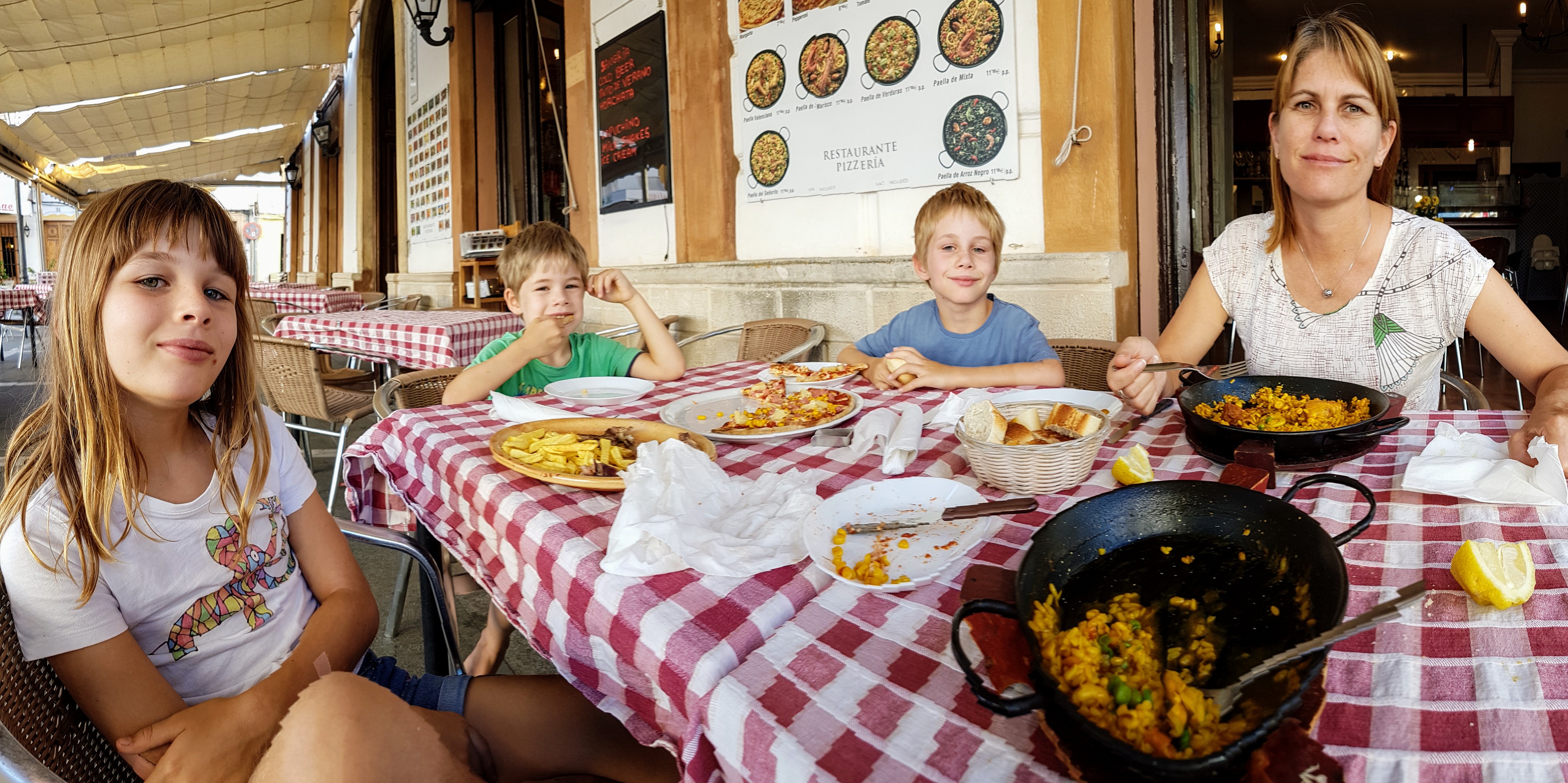There are many familiar Spanish foods which we were keen to try while here, though first we had to adjust to the Spanish eating habits.
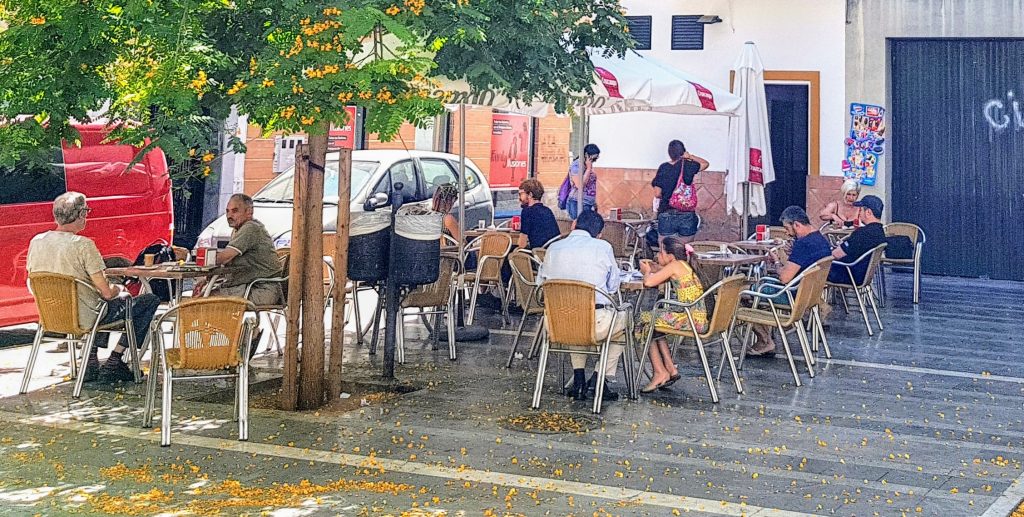
The most important meal of the day is lunch, a long social event with several courses, followed by siesta time to relax during the long hot afternoon. Many restaurants will close during the afternoon, and most will be empty until later in the evening, when it is cooler and the Sevillanos come out to play.
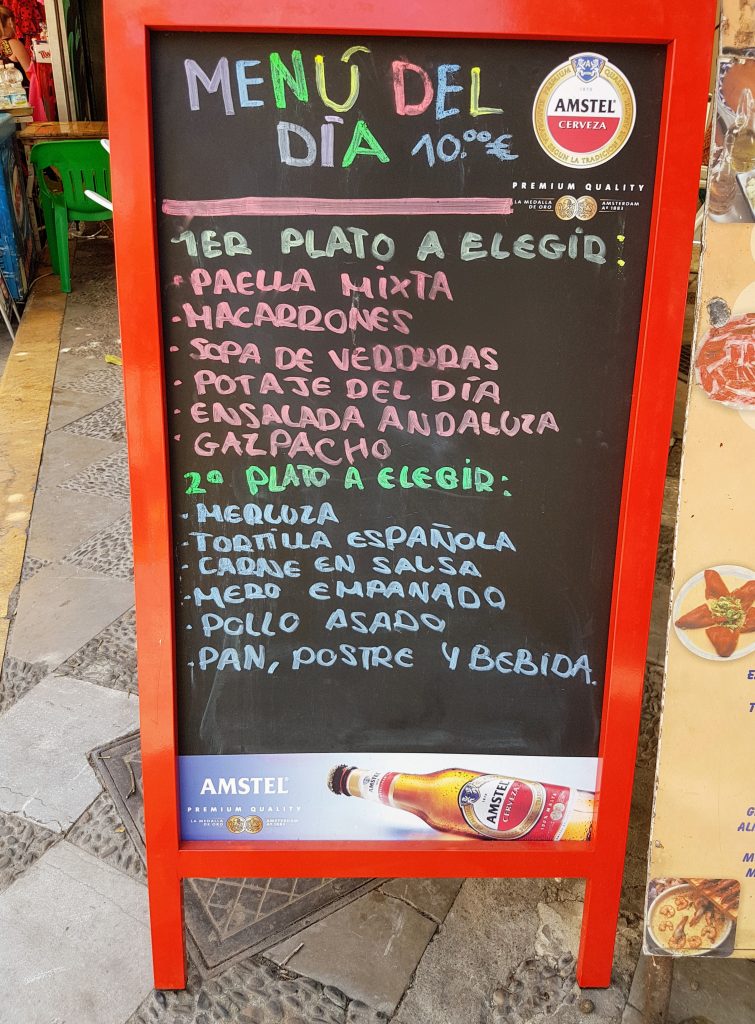
Deciding what to choose from the menu is hard when there is so many tasty sounding dishes. An easy option that we went for first was the ‘menu del dia’. The price, and what you get is variable, but you generally get an entrée, a main course and a dessert. It’s good value for money and a great way of sampling some traditional dishes.
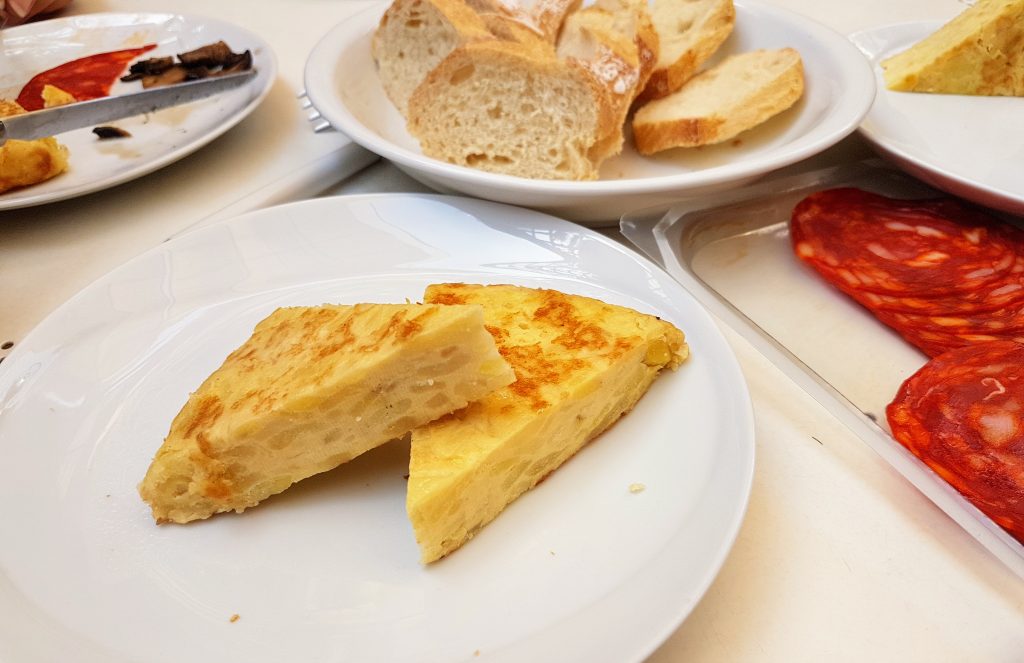
Another way we were able to try more dishes was to order a range of tapas. Tapas is often eaten for the evening meal and there are thousands of small tapas bars all over the cities, with usually an extensive list of small plates of unique food. It is the perfect solution for small and sometimes fussy appetites.
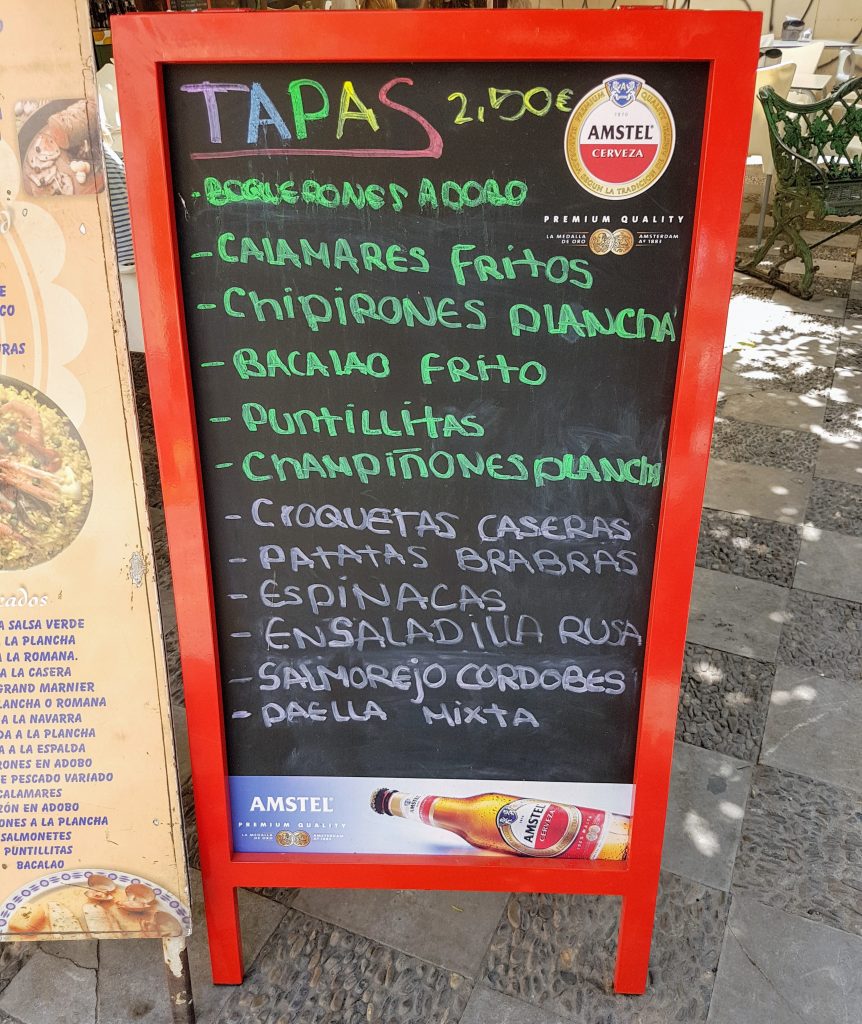
Some of the dishes we tried include; patatas bravas, potato croquette, calamari, mushrooms, tortilla (egg omelette with potato), eggplant pie, chicken wings, swordfish, mini burgers, even a tasty moussaka. The good thing about tapas is that even if you order the same thing, it can be very different from different restuarants!
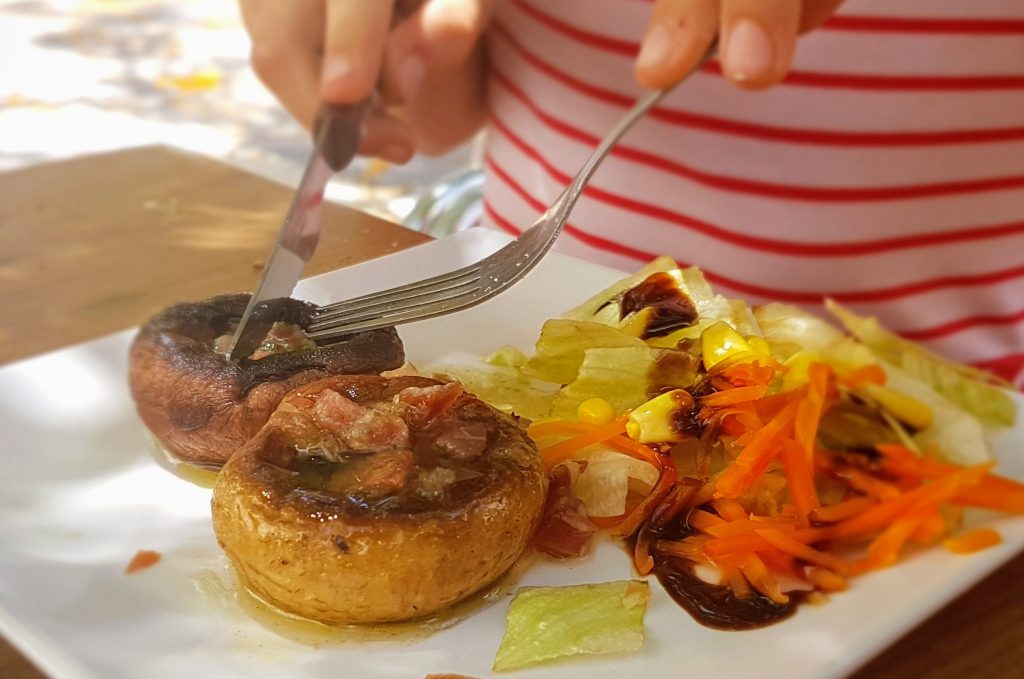
Paella is the quintessential dish of Spain, and the first dish we sought out to have, and it did not disappoint. Served in almost every restaurant as a staple, it can be eaten as tapas, or as a main dish. Rice cooked in a speciality pan, with chicken, seafood, vegetables, red capsicum, and saffron, this plate of yellow goodness was delicious!
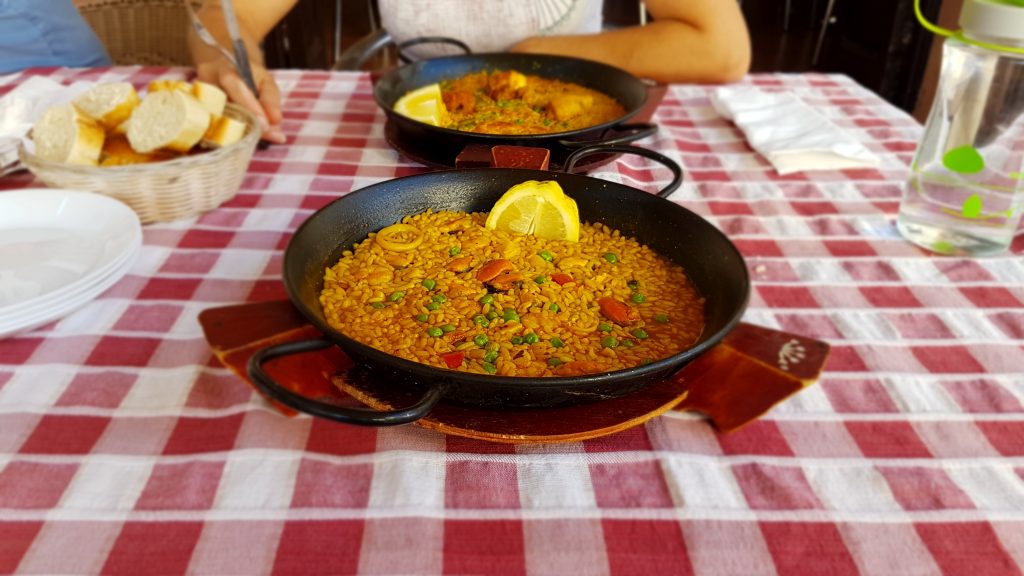
When we wanted a break from restaurant eating, there were boccadillos – sandwiches or rolls with fillings such as huevos (eggs), Jamon Serrano (cured ham), queso (cheese). Boccadillos and mini burgers were often on the tapas menu and great options for the kids.
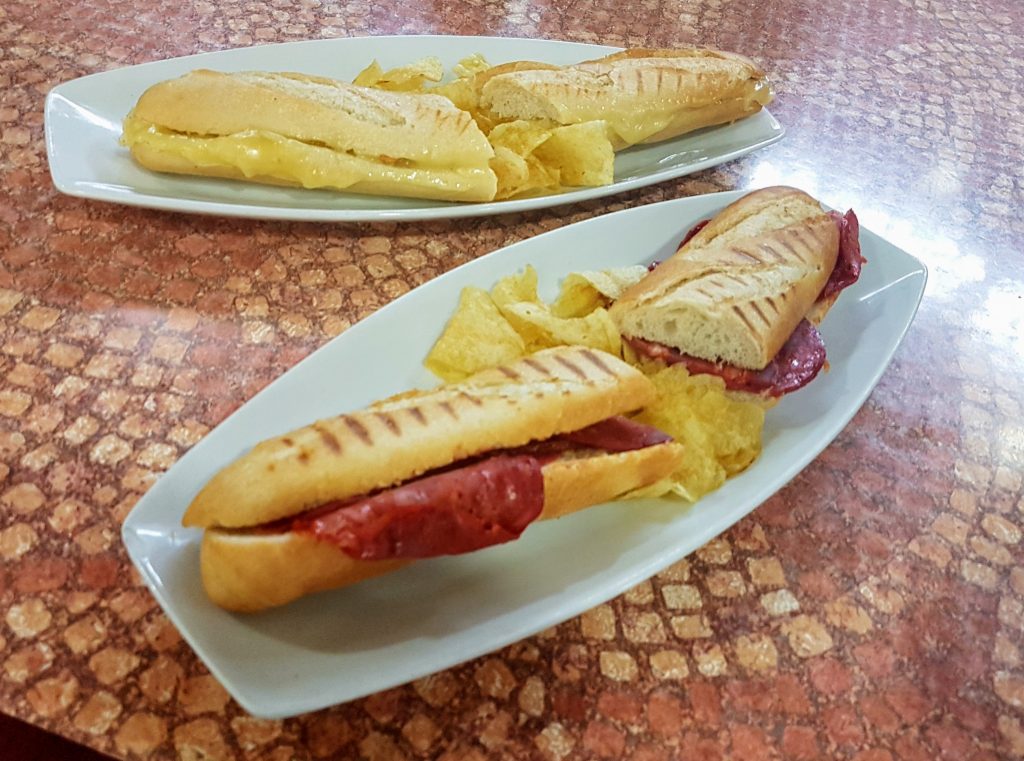
The variety of cured meats is outstanding, it really is a loved traditional food. Chorizo is one of the most popular here (and well-known in Australia). It has mostly been served thinly sliced, like salami, in rolls, rather than cut in large pieces to cook, although we did eat it cooked at times.
Gazpacho is a Spanish dish, but actually originates from the region of Andalusia, of which Seville is the largest town. It is cold tomato soup, and is really delicious on a very hot afternoon, after walking the streets of Seville. It is so refreshing, and slightly spicy with a twist of vinegar. It was served with a side portion of diced cold tomato, capsicum and onion.
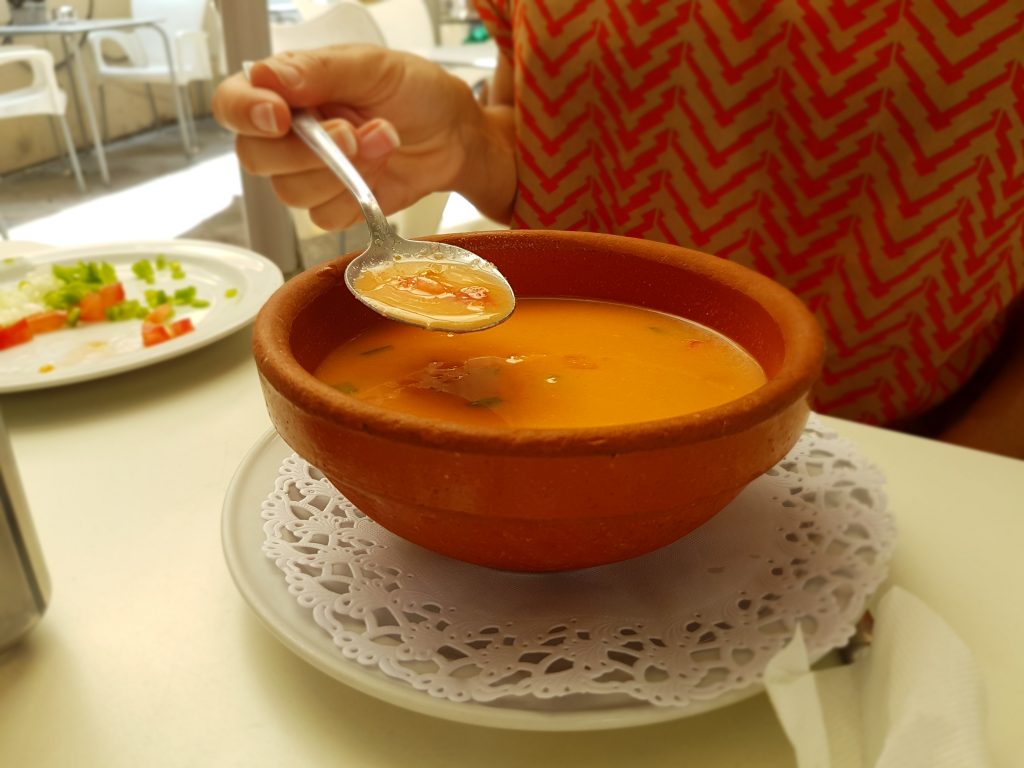
Empanadas are another classic dish or snack to eat in Spain. They are a filled pastry, which I remember well from Central America, but unfortunately we ran out of time to try one here!
Churros. What can I say except the kids have been hanging out to eat churros in Spain since we left Australia! Their dreams have come true because we had them many times, even for breakfast on our last day! They are essentially made from long skinny shaped dough, deep fried, but some were smooth and round, and others had long ridges along the length. They are served sprinkled with cinnamon and sugar, and with a side of thick hot chocolate for dipping. Very easy to love.
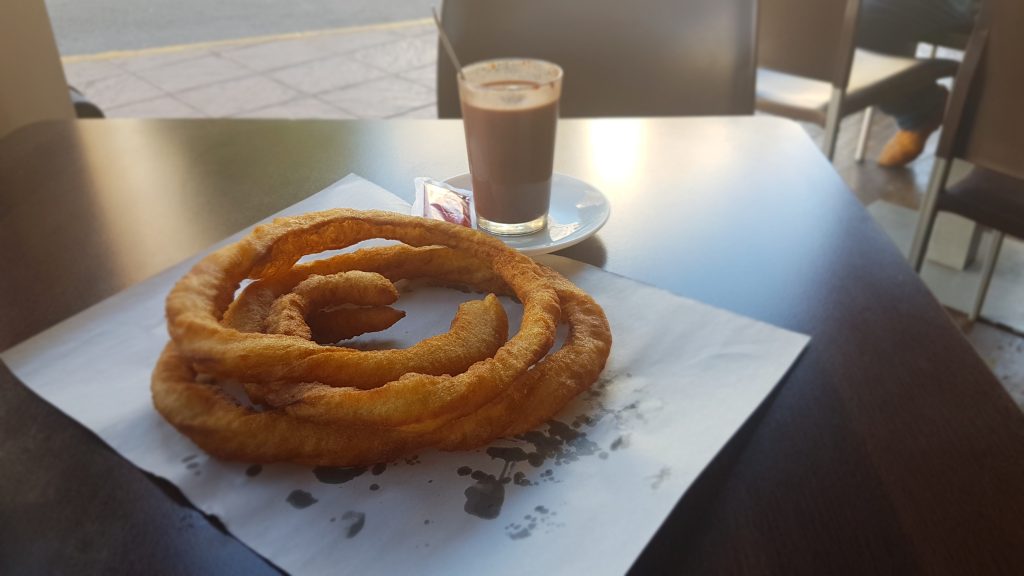
Another pastry we tried was the torta hojaldre (puff pastry) almendra (almond), a twisted layered pastry, either, with or without chocolate, which is really crumbly and sweet. We did find very similar varieties of this in both Italy and France, so it must be a broader European snack.
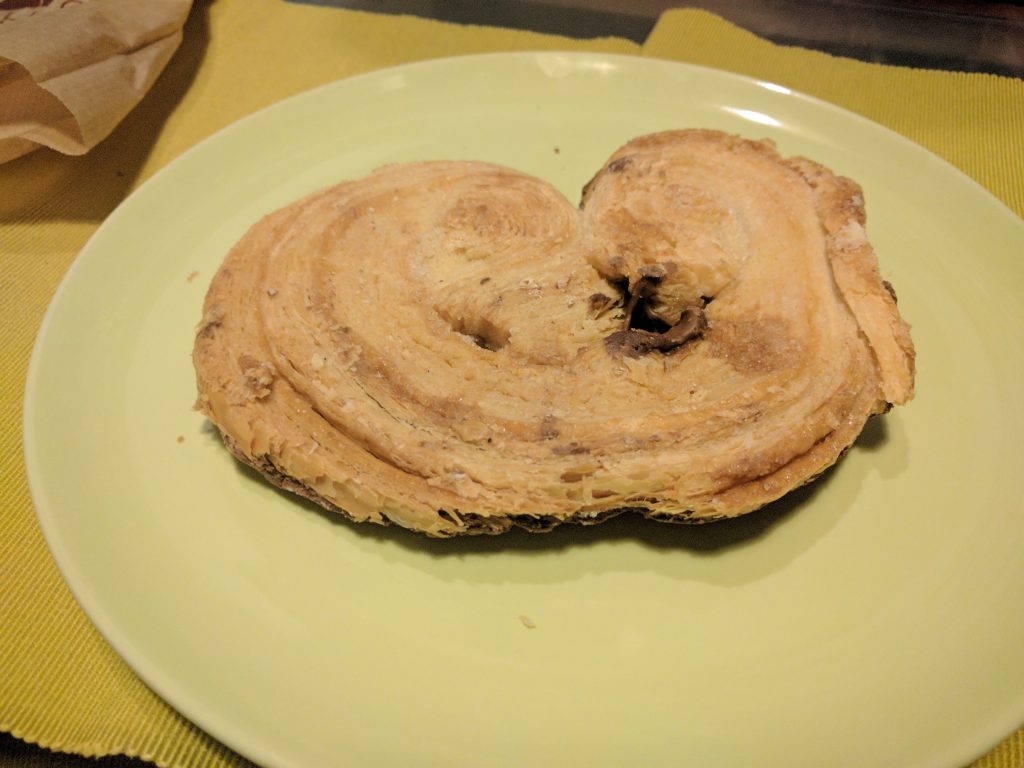
Sangria is a traditional Spanish drink made from wine, triple sec, orange juice, ice and some sparkling soda for bubbles. Apparently though only the tourists drink it! An alternative that we came across which the locals drink was Tinto Verano meaning summer wine, which is simply wine and lemonade with a splash of vermouth, which was really refreshing on the hot afternoon we tried it.
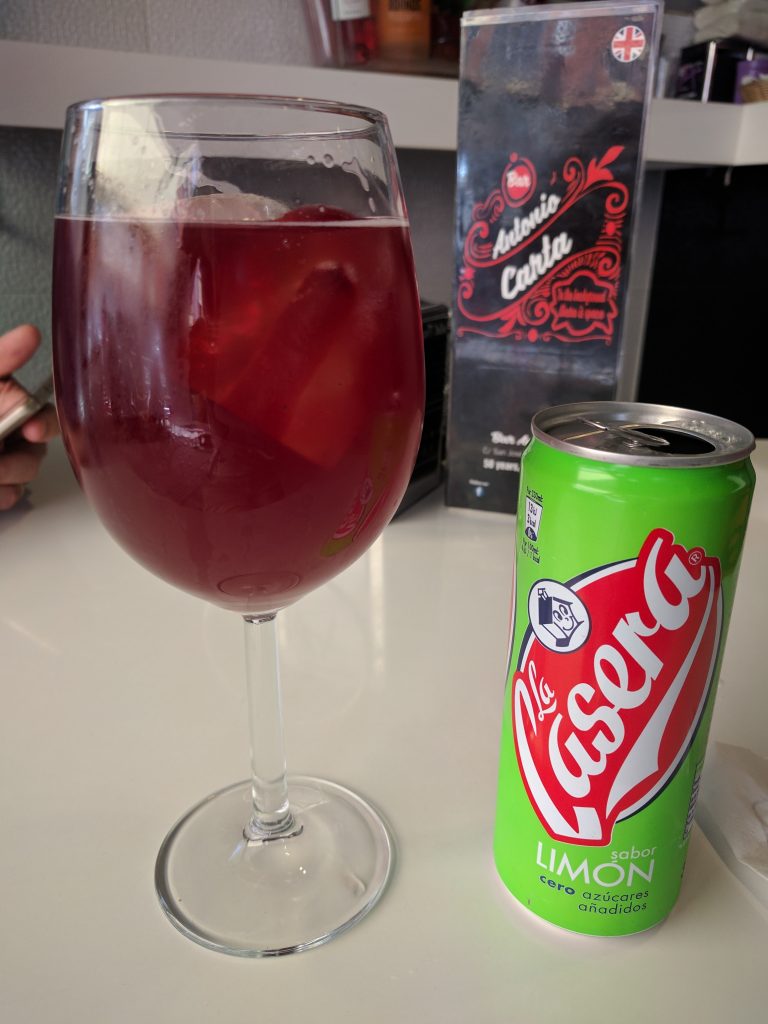
They also love their coffee in Spain, taking the espresso to another level. In one cafe there was an image of all the different types of espresso you can order from bolo to nube.

It was fairly easy to navigate the Spanish menus, although it was always easier when translated to English. We were happy once we learnt the word for snails (caracoles), to ensure we didn’t accidentally order them. Sorry not game enough again!
